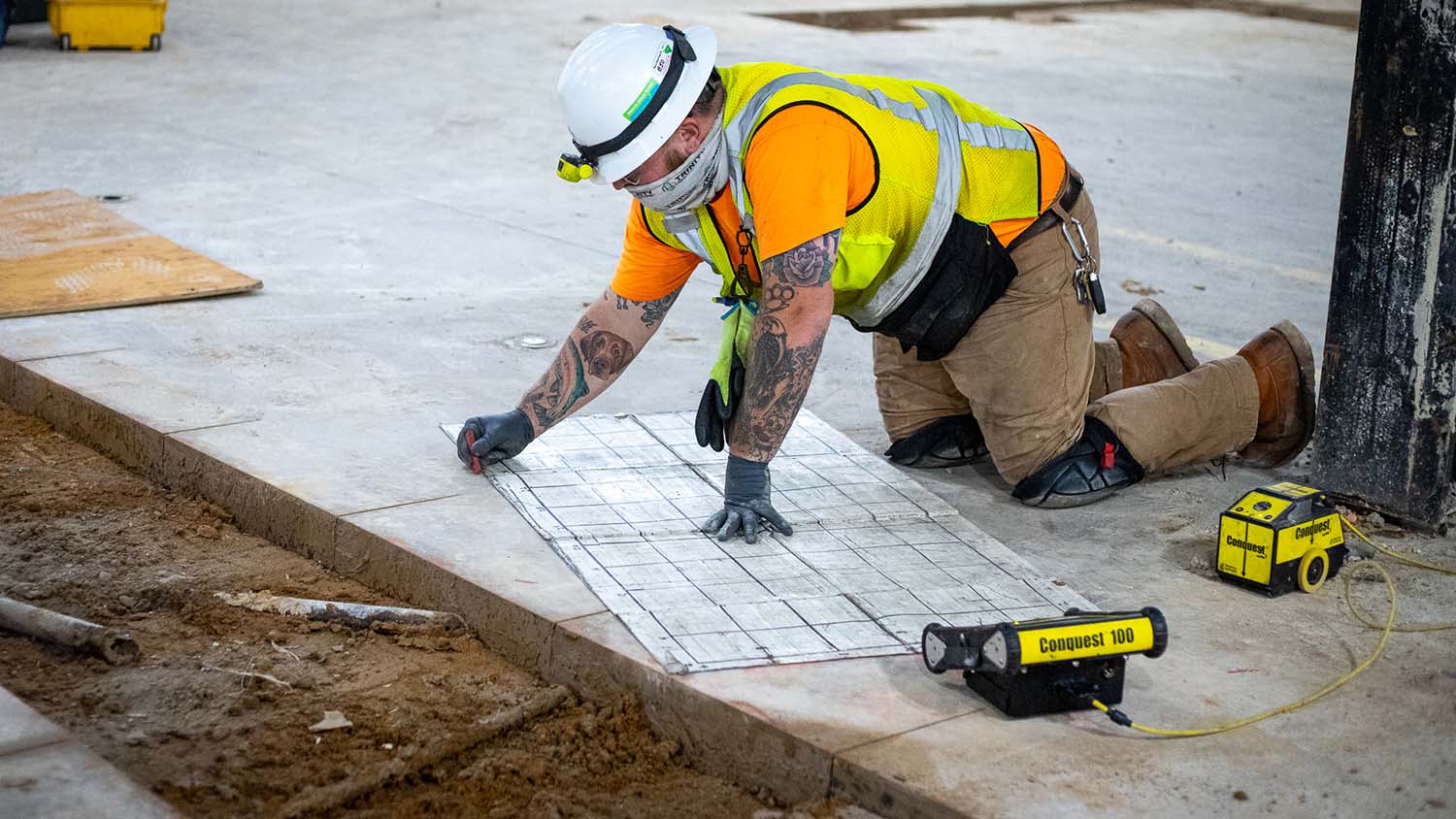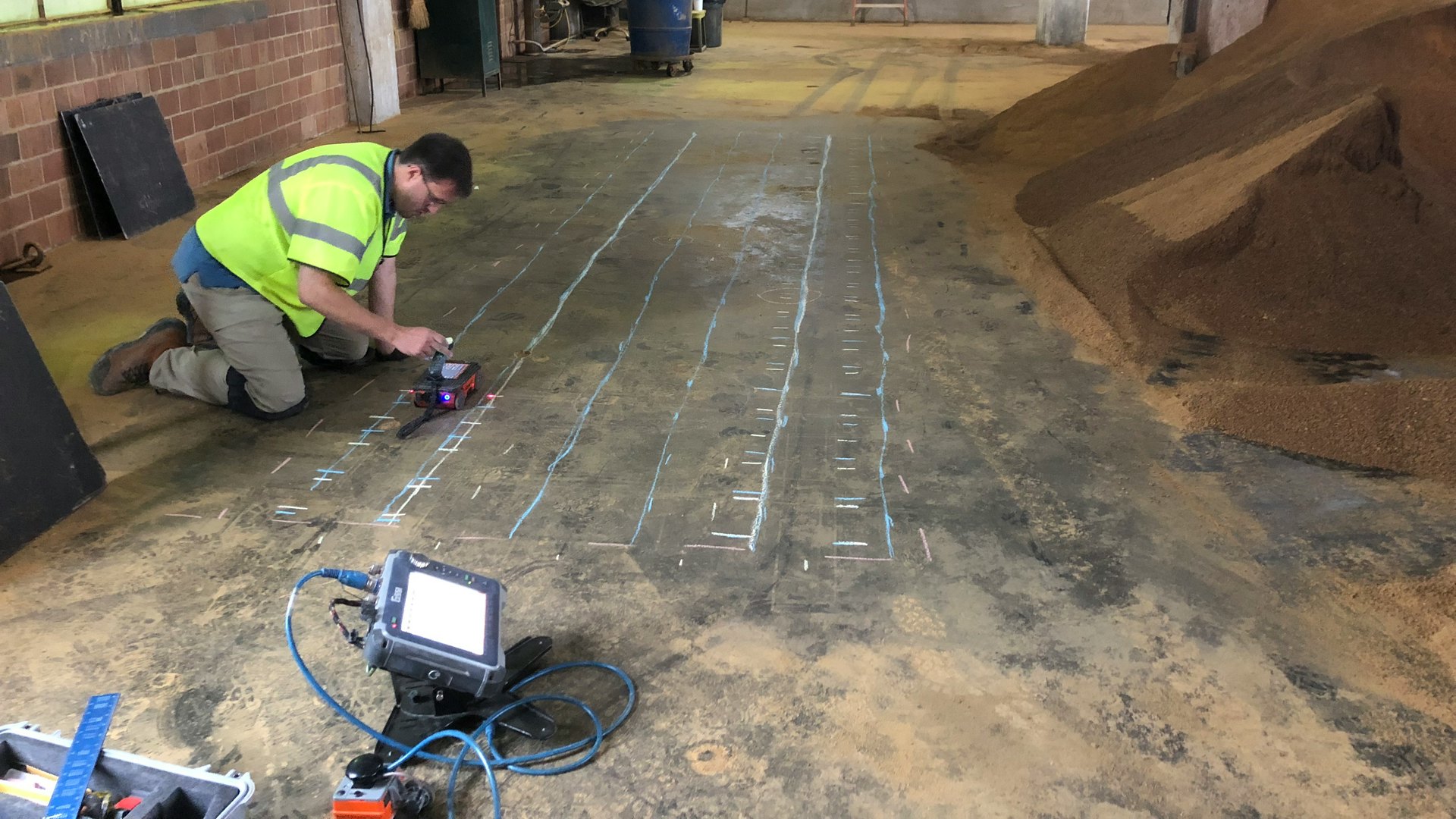Utilizing Development: RainierGPR Concrete Scanning for Precision Results
Utilizing Development: RainierGPR Concrete Scanning for Precision Results
Blog Article
Harness the Strategic Edge of Concrete Scanning for Unparalleled Task Success and High Quality Guarantee
In the realm of contemporary construction and infrastructure growth, the usage of concrete scanning technology has actually emerged as a critical device for guaranteeing task success and keeping top quality standards. This innovative strategy offers a critical edge by giving important insights into the structural honesty of concrete aspects, thereby making it possible for informed decision-making throughout the task lifecycle. By delving right into the depths of concrete make-ups and discovering hidden abnormalities, stakeholders can proactively address possible risks, simplify operations, and maximize resource appropriation. Nevertheless, truth power of concrete scanning lies not just in its ability to improve task results yet likewise in its ability to transform traditional methods, establishing a brand-new benchmark for precision and performance in the construction sector.
The Importance of Concrete Scanning
Concrete scanning is an essential action in building projects to guarantee the security and stability of structures. By making use of numerous scanning technologies such as Ground Passing Through Radar (GPR) and electromagnetic induction, building groups can non-destructively review the subsurface of concrete structures to identify prospective dangers like rebar, channels, or post-tension cable televisions. This information is essential for project service providers, supervisors, and engineers to make enlightened choices and stay clear of expensive mistakes throughout the building process.
Among the main reasons that concrete scanning is so crucial is its ability to prevent crashes and injuries on the construction website. Inadvertently puncturing a live electric conduit or harmful post-tension cables can have tragic consequences, not just in terms of security but additionally in terms of task delays and economic implications. By performing extensive concrete scanning prior to any boring, reducing, or coring activities, building and construction teams can alleviate threats and create a more secure working environment for everybody entailed.
Along with safety and security considerations, concrete scanning likewise plays a vital role in making certain the long-lasting sturdiness and top quality of the framework. By spotting any type of abnormalities or defects concealed below the surface, such as spaces or delamination, very early treatment can be implemented to deal with these problems prior to they rise into more considerable problems. Ultimately, investing in concrete scanning is a positive measure that can save time, money, and resources in the future, while also upholding the greatest requirements of building quality.
Advanced Modern Technology for Specific Outcomes

By incorporating these advanced modern technologies right into concrete scanning techniques, building and construction groups can enhance operations, minimize task hold-ups, and make certain the total top quality and success of the job. The accuracy and effectiveness supplied by these devices add dramatically to the task's success by assisting in educated decision-making and enhancing top quality guarantee official source procedures.
Enhancing Task Performance and Timelines

In addition, concrete scanning enables teams to identify structural weaknesses and prospective risks early on, allowing for prompt remediation and stopping mishaps that might hinder task timelines. The real-time information offered by scanning tools promotes educated decision-making, leading to smoother control among various trades and stakeholders. This enhanced partnership lessens problems, boosts performance, and inevitably increases task distribution.
In addition, by proactively dealing with problems with concrete scanning, building and construction groups can abide by routines better, lower downtime, and optimize source allowance. The capability to find surprise challenges and confirm architectural stability successfully adds to total job effectiveness and timelines, making sure successful results and client satisfaction.
Ensuring Safety and Risk Mitigation

Risk reduction methods can be boosted via the in-depth info provided by concrete scanning, making it possible for job groups to make educated decisions that reduce the probability of unforeseen incidents. In addition, by precisely drawing up subsurface conditions, contractors can avoid pricey rework, delays, and damages to existing structures, additionally contributing to total job safety and security and success. Applying concrete scanning as a routine technique not only makes certain a safer job atmosphere yet likewise infuses confidence in stakeholders relating to the project's commitment to top quality and risk administration.
Quality Assurance Via Concrete Scanning
Concrete scanning plays a critical duty in upholding high quality guarantee standards within building and construction projects. By using innovative scanning innovations such as Ground Passing Through Radar (GPR) and Concrete X-ray, project supervisors and engineers can ensure the integrity and quality of concrete frameworks. Via concrete click scanning, possible defects, such as voids, cracks, or strengthening bar blockage, can be identified non-destructively, allowing for timely interventions to maintain the structural integrity of the project.
Quality assurance through concrete scanning not only helps in identifying existing issues however likewise allows positive procedures to stop future troubles that can endanger the safety and security and long life of the framework. By performing thorough scans at essential stages of building and construction, groups can validate the accuracy of structural plans, verify the positioning of critical elements, and attend to any type of inconsistencies promptly. This proactive method minimizes rework, minimizes expensive hold-ups, and eventually results in the shipment of top notch, long lasting frameworks that satisfy or surpass sector criteria.
Verdict
In conclusion, concrete scanning plays an important role in making sure task success, efficiency, safety and security, and top quality assurance. The tactical edge provided by concrete scanning allows for positive risk mitigation and enhances general task monitoring.
In the world of modern construction and infrastructure development, the utilization of concrete scanning modern technology has actually arised as a pivotal tool for ensuring job success browse around these guys and keeping quality standards. By integrating these innovative innovations into concrete scanning methods, building teams can streamline workflows, reduce project hold-ups, and make certain the general high quality and success of the project.Given the necessary nature of job effectiveness and timelines in building management, the emphasis currently moves towards guaranteeing security and mitigating risks within the project environment.Concrete scanning plays a crucial function in supporting high quality assurance standards within construction tasks. By making use of sophisticated scanning innovations such as Ground Penetrating Radar (GPR) and Concrete X-ray, project supervisors and engineers can guarantee the stability and quality of concrete structures.
Report this page